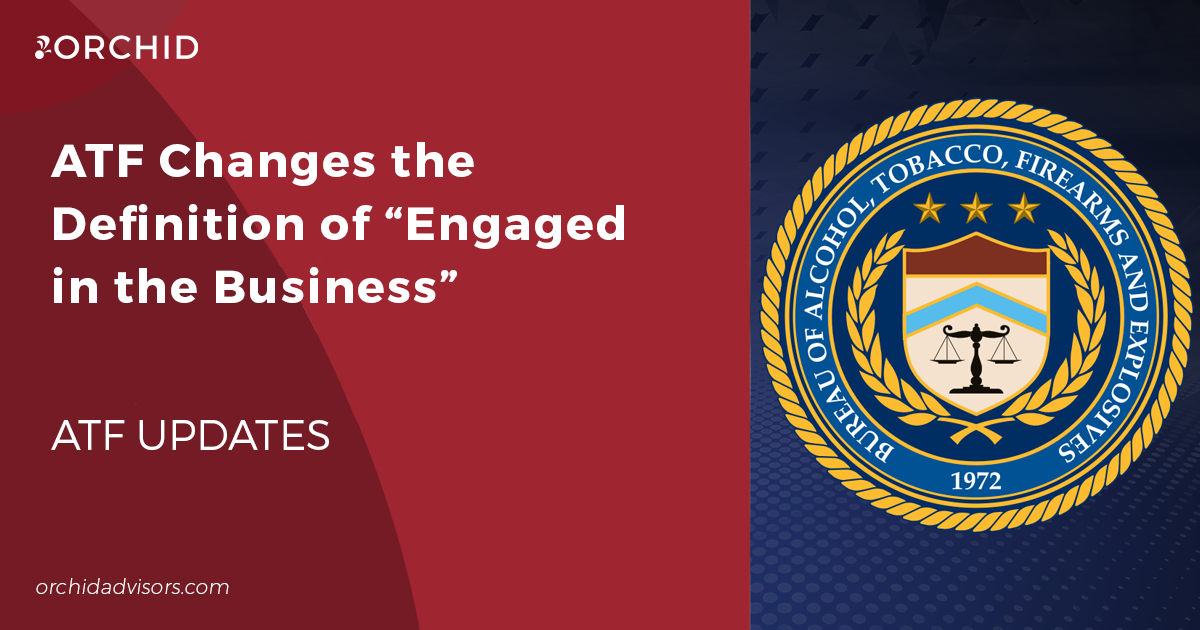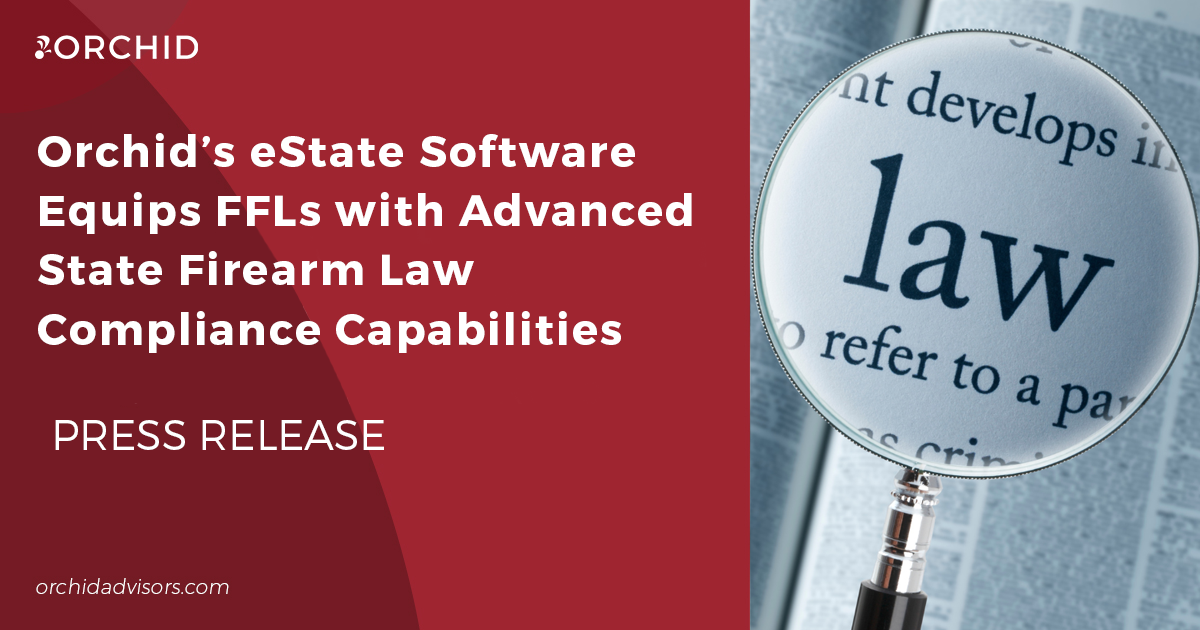Federal firearms licensees (FFLs) exist to make, import, export and sell firearms, ammunition and accessories. Sales can be to individuals, law enforcement agencies, and other licensees.
Licensees are required to maintain records in accordance with various regulations, one of which pertains to the record keeping requirements such as 27 CFR 478.125(e) – “Record of receipt and disposition.”
If such records are maintained electronically, licensees must also follow the requirements of ATF Ruling 2013-5. Understanding and complying with the requirements of either set of rules has sometimes proved challenging.
The following are a few of the key elements from regulation 27 CFR 478.125(e) and ATF Ruling 2013-5 that dealers should keep in mind.
Record of receipt and disposition – 27 CFR 478.125(e)
- Each licensed dealer shall enter into a record each receipt and disposition of firearms. In addition, before commencing or continuing a firearms business, each licensed dealer shall inventory the firearms possessed for such business and shall record same in the record required by this paragraph.
- The record required by this paragraph shall be maintained in bound form under the format prescribed below. The purchase or other acquisition of a firearm shall, except as provided in paragraph 478.125(g), be recorded not later than the close of the next business day following the date of such purchase or acquisition.
- The record shall show the date of receipt, the name number of the person from whom received, the name of the manufacturer and importer (if any), the model, serial number, type, and the caliber or gauge of the firearm.
- The sale or other disposition of a firearm shall be recorded by the licensed dealer not later than 7 days following the date of such transaction. When such disposition is made to a nonlicensee, the firearms transaction record, Form 4473, obtained by the licensed dealer shall be retained, until the transaction is recorded, separate from the licensee’s Form 4473 file and be readily available for inspection.
- When such disposition is made to a licensee, the commercial record of the transaction shall be retained, until the transaction is recorded, separate from other commercial documents maintained by the licensed dealer, and be readily available for inspection.
- The record shall show the date of the sale or other disposition of each firearm, the name and address of the person to whom the firearm is transferred, or the name and license number of the person to whom transferred if such person is a licensee, or the firearms transaction record, Form 4473, serial number if the licensed dealer transferring the firearm serially numbers the Forms 4473 and files them numerically.
- The licensee records in the computer system all of the acquisition and disposition information required by 27 CFR 478.121, 478.122, 478.123, 478.125(e) and 478.125 (f), and 27 CFR 479.131, as applicable. Required information includes a record of both the manufacturer and the importer of foreign-made firearms (if any). Additional columns can be utilized to capture certain additional information (e.g. inventory number, new/used, etc.), so long as the additional information is separate from the required information and the required information is readily apparent. An ATF Form 4473 serial number may be used instead of the address for recording the transfer of a firearm to a non-licensee if such forms are filed numerically.
- The system must retain any correction of errors as an entirely new entry, without deleting or modifying the original entry (e.g., macro created to track changes). Alternatively, the system may allow for entries in a “notes” column to explain any correction and/or track changes (i.e., what was changed, who made the change, why the change was needed). ATF suggests that the recordkeeping system be capable of blocking fields from correction (e.g., protect workbook function).
- The system cannot rely upon invoices or other paper/manual systems to provide any of the required information.
- The system must allow queries by serial number, acquisition date, name of the manufacturer or importer, name of the purchaser, and address of purchaser or other transferee.
- The licensee must print or download all records from the system: a. at least semiannually; b. upon request of an ATF officer (must be provided within 24 hours); c. prior to discontinuance of the database; and d. prior to discontinuance of the licensee’s firearms business. The printouts/downloads must include all firearms in inventory, as well as all firearms transferred during the period covered, sequentially by date of acquisition, and must be limited to display only the information required by the applicable regulations. The printouts/ downloads may contain additional columns capturing certain additional information, provided that the required information is readily apparent.
- If the licensee prints out the records, the printout must be retained until the next printout is prepared.
- Printouts may include antique firearms, but cannot include other merchandise. However, antique firearms must be identified as such in the “firearm type” column.
- If a licensee downloads the records on a portable storage device (e.g., Compact Disc (CD), Digital Versatile Disc (DVD), or Universal Serial Bus (USB) Flash Drive), the download must be retained on the portable storage device until the next download is prepared. Additionally, the licensee must be able to present the most current version of the requested records in a printed format at ATF’s request.
- Electronic firearms acquisition and disposition records may be stored on a computer server owned and operated solely by the person (as defined by 18 U.S.C. section 921(a)(1)) holding the license, provided that the records are readily accessible through a computer device located at the licensed premises during regular business hours. The server must be located within the United States.
- The system must back-up the firearms acquisition and disposition records on a daily basis to protect the data from accidental deletion or system failure.
- Upon discontinuance of a license, the licensee must provide an American Standard Code for Information Interchange (ASCII) text file (in conformity with industry standards) containing all acquisition and disposition records, and a file description, to ATF Out-of- Business Records Center, in accordance with 27 CFR 478.127. The complete printout and ASCII text file (and file description) must contain all information prescribed by regulation.
- All laws, regulations, policies, and procedures applicable to the paper form of the firearms acquisition and disposition records also apply to electronic versions. Licensees are not required to use an electronic acquisition and disposition record, and may continue to use a paper record in the format prescribed by regulation. Licensees are reminded of their responsibility to ensure accuracy and completeness of all of their required records.






0 Comments